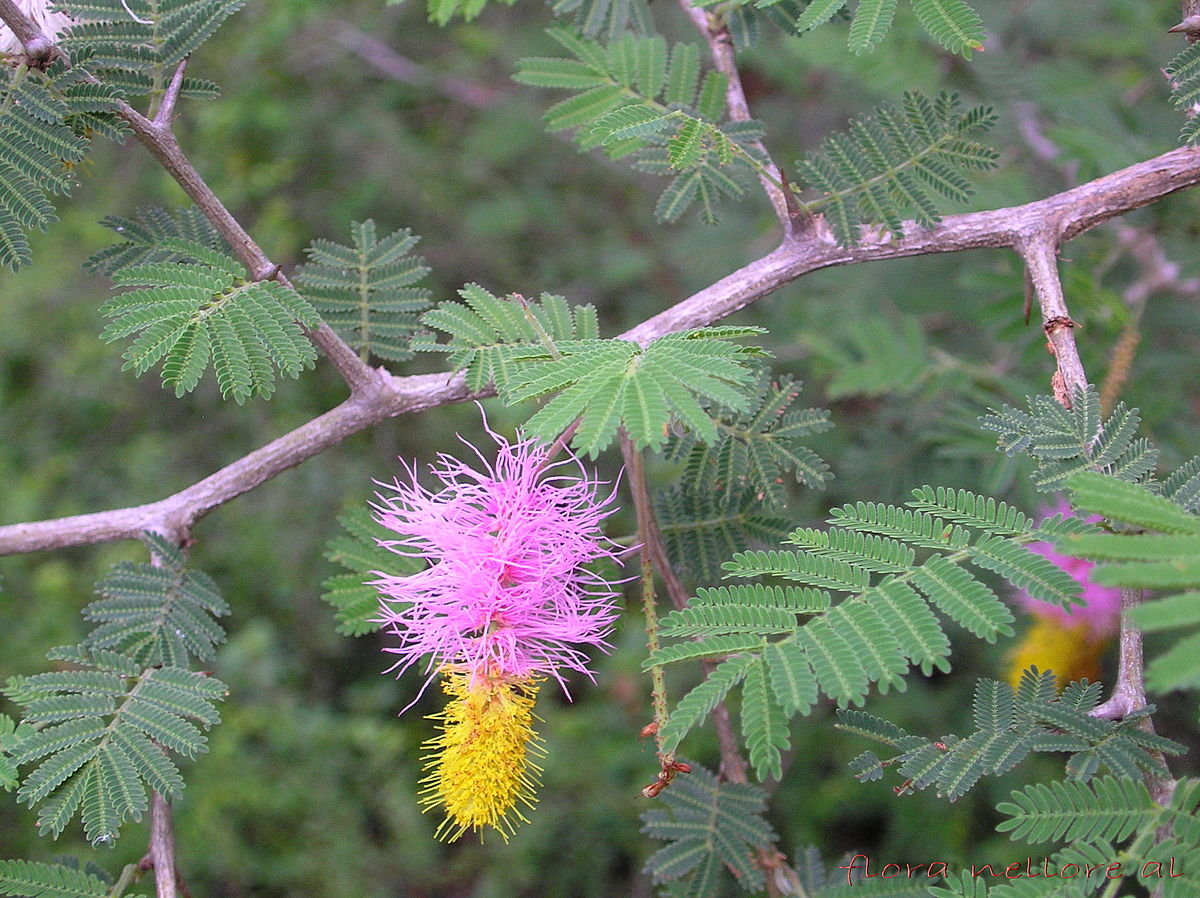Dichrostachys glomerata (Linn.).
| Botanical Name | Dichrostachys glomerata (Linn.). |
| Order: | Fabales |
| Family: | Mimosaceae |
| Genus: | Dichrostachys |
| Species: | D. cinerea |
| Common Names: | sicklebush, Bell mimosa, Chinese lantern tree or Kalahari Christmas tree |
Plant Synonyms
Dichrosatchys cinerea
Plant Local Names
Hausa Name: Dundun
Fulani Name: Budi
Igbo Name: Ami ogwu
Yoruba Name: Kara
Plant Habitat
Savanna
Plant Material of Interest
Root, bark, leaves
Plant Description
Tree to 25 feet high, or shrub, branching low down, often thickets. Bark brown, peeling off in strip. Spines blackish, stout, tapering to a sharp poin, often producing leaves. Branchlets and young foliage densely hairy.
Leaves with a shortly hairy common stalk 2- 4in long; 8- 15 pairs of pinnae 0.5- 1.5 in. long, with a small rod-like gland between each pair; 10- 25 pairs of narrow crowded leaflets 0.1- 0.2 in long.
Flowers (Feb.- May; July) in stout axillary spikes 3- 4 in long including the stalk; with conspicuous sterile flowers below composed of densely crowded white, pink or mauve filaments, and fertile flowers above with 10 yellow stamens.
Fruits (Nov.- Jan.) very persistent, in clusters at the end of a stout stalk; a few to numerous practically glabrous flat pods 1- 3 in long becoming folded or twisted and eventually forming a more or less compact head. (Keay et. al., 1964)
Plant Used Parts
Plant Uses
i. The root decoction is used for epilepsy and this root decoction is used concomitantly with Ciawan daji (Hausa) Eleusine indica.
ii. The bark seems to have a special reputation as a vermifuge.
iii. The bark is scraped, pounded and macerated in cold water, spices and lime juice are added the mixture is given both for dysentery and for worms.
iv. A decoction of the bark is given as a stomachic and vermifuge, the same is taken internally as a remedy for urethral discharges.
v. For elephantiasis, relieve the inflammation of gonorrhea. Decoction of leaves used to relieve sore throat. (Ogbochukwu, 2005).
Plant Therapeutic Action
Plant Precaution for Use
Plant Adverse Effect
Plant Contraindication
Plant Dosage Forms
Plant Dosage
Plant Storage
Plant Chromatographic Fingerprint
Plant Constituents
The mature pod, and possibly other parts of the tree are said to yield hydrocyanic acid but the fruit and the beam have been analysed from the dietetic point of view and do not contain hydrocyanic acid. The pod has been found to yield 9.1% tannin. The seeds have been found to contain trypsin and chymotrypsin inhibitors. An elemental analysis of D.cinerea and other forages of Northern Nigeria showed the presence of N, P, K, Ca, Zn, Cu.
Free amino acids such as methionine, lysine, trptophan have been reported in the seed. The plant has also been reported to contain s-substituted cysteine, dichrostachic acid. N-acetl-L-Djenkolic acid dichrostachic acid were detected using six different poly chromatic spray reagents based on ninhydrin. 48 amino acids were separated in MN 300- HR- Cellulose by thin-layer chromatography. Using n-butnol- acetic acid-water and dimensional paper chromatography. Catechu and Gum Arabic are found in D.cinerea.


